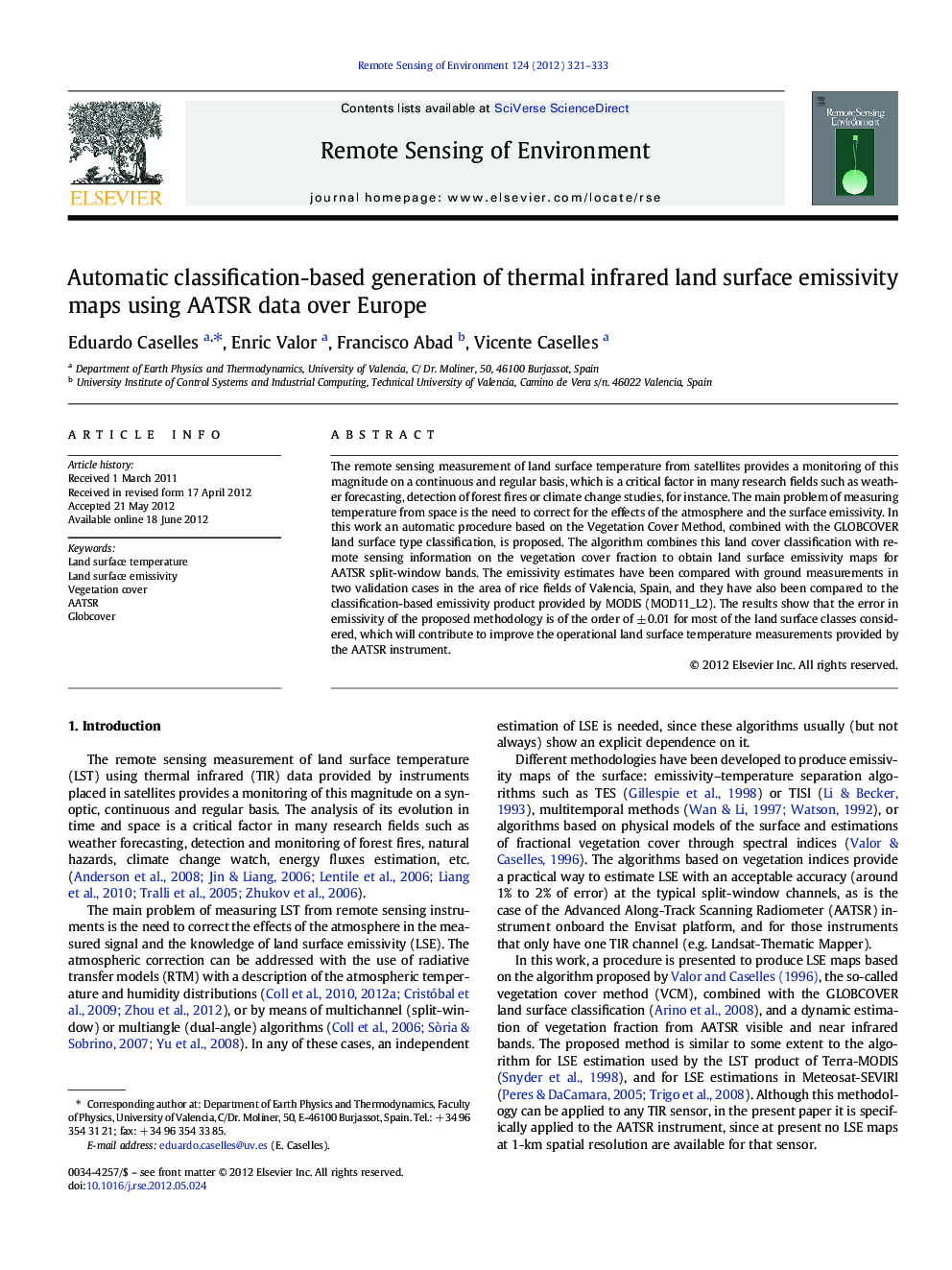| Article ID | Journal | Published Year | Pages | File Type |
|---|---|---|---|---|
| 4459010 | Remote Sensing of Environment | 2012 | 13 Pages |
The remote sensing measurement of land surface temperature from satellites provides a monitoring of this magnitude on a continuous and regular basis, which is a critical factor in many research fields such as weather forecasting, detection of forest fires or climate change studies, for instance. The main problem of measuring temperature from space is the need to correct for the effects of the atmosphere and the surface emissivity. In this work an automatic procedure based on the Vegetation Cover Method, combined with the GLOBCOVER land surface type classification, is proposed. The algorithm combines this land cover classification with remote sensing information on the vegetation cover fraction to obtain land surface emissivity maps for AATSR split-window bands. The emissivity estimates have been compared with ground measurements in two validation cases in the area of rice fields of Valencia, Spain, and they have also been compared to the classification-based emissivity product provided by MODIS (MOD11_L2). The results show that the error in emissivity of the proposed methodology is of the order of ± 0.01 for most of the land surface classes considered, which will contribute to improve the operational land surface temperature measurements provided by the AATSR instrument.
► A methodology for automatic generation of LSE maps is proposed. ► It is based on the combination of the Vegetation Cover Method with GLOBCOVER. ► Adjusting the coefficients depending on the components and geometry of each surface. ► Fractional vegetation cover is studied dynamically to capture surface changes in a year. ► LSE is achieved with ± 1% of error or lower, which implies errors in LST lower than ± 1 K.
